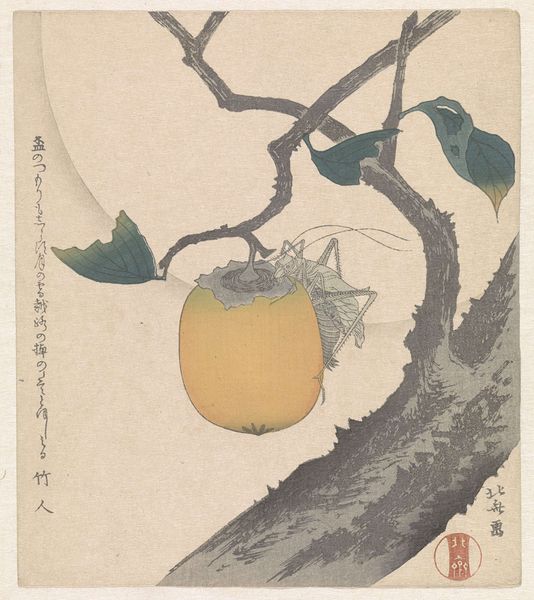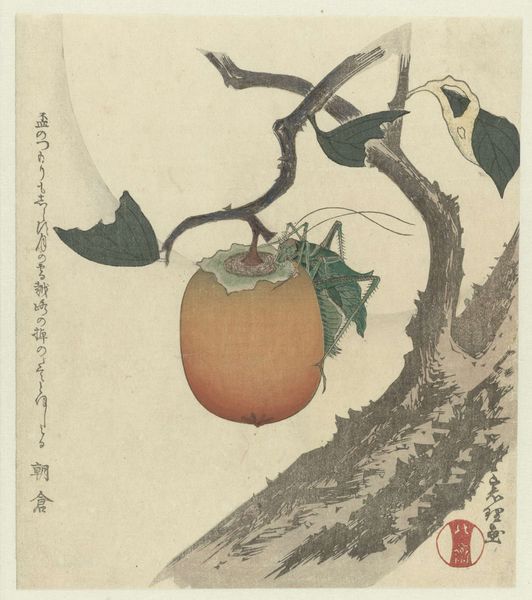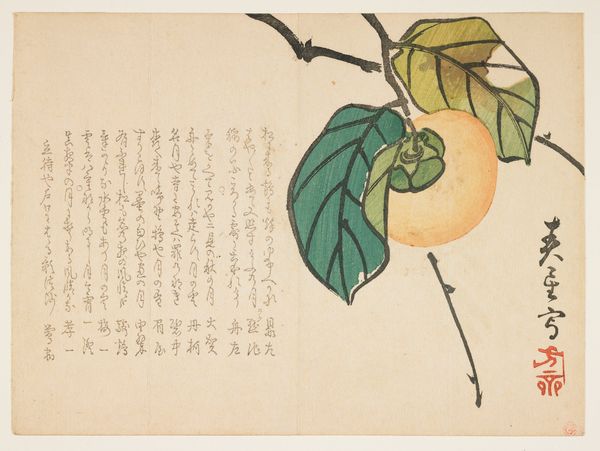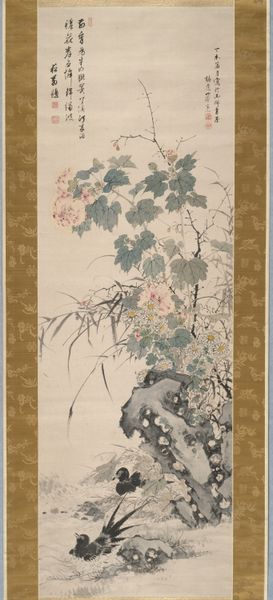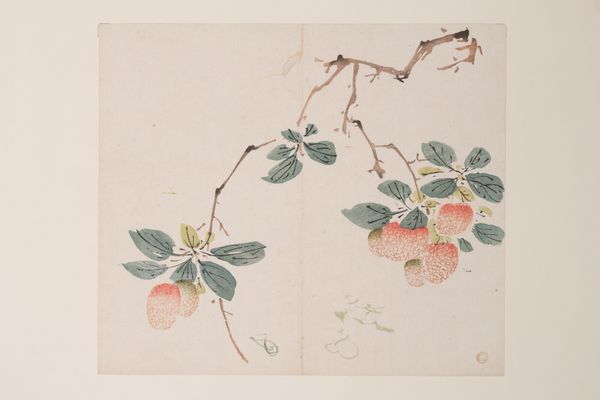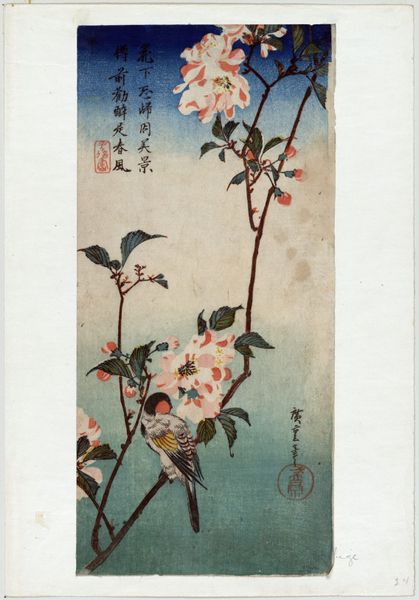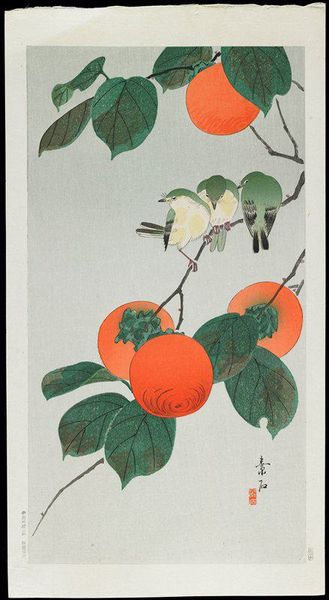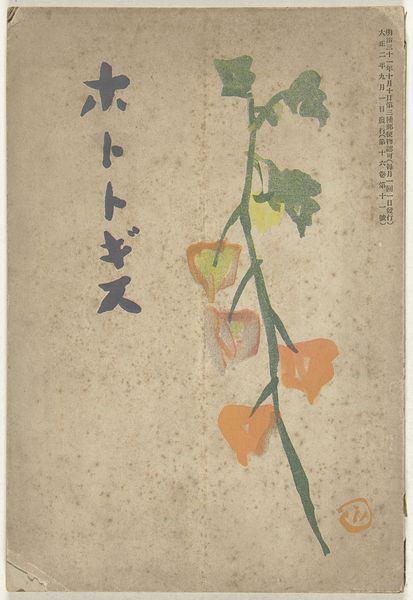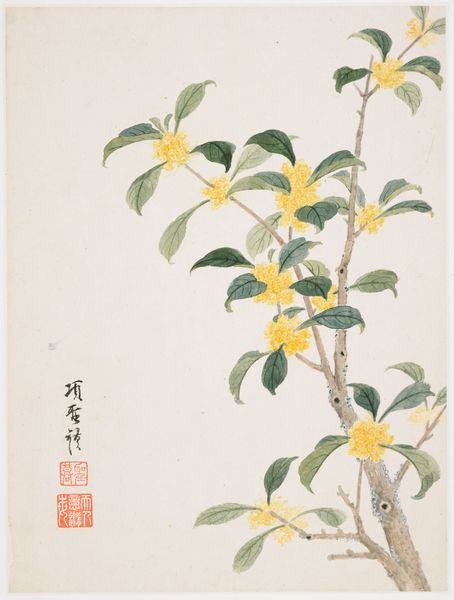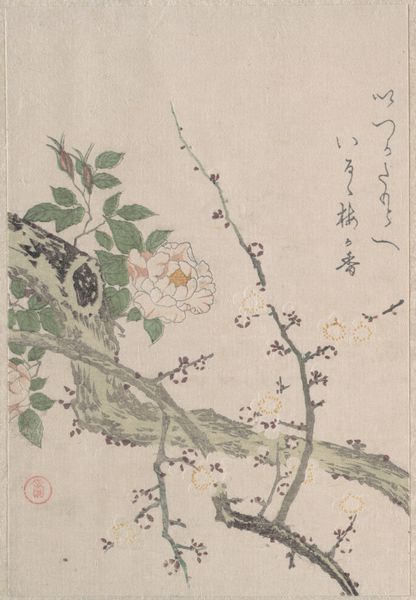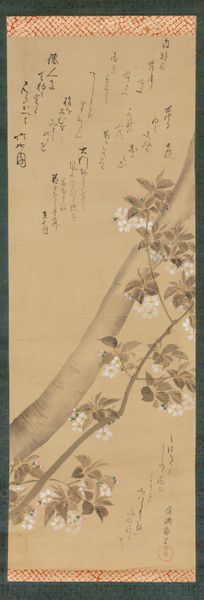
hanging-scroll, ink
#
portrait
#
asian-art
#
landscape
#
ukiyo-e
#
japan
#
figuration
#
hanging-scroll
#
ink
#
line
Dimensions: 44 x 14 3/8 in. (111.76 x 36.51 cm) (image)
Copyright: Public Domain
Yūhi painted "Magpies in a Fruit Tree" on paper, sometime between 1712 and 1773. Magpies, symbols of joy, perch on a branch laden with ripe fruit. The painting's creation occurred during the Edo period in Japan, a time of relative peace and isolation under the Tokugawa shogunate. Yūhi, while part of the samurai class, embraced artistic expression, a pursuit that gained traction as social mobility shifted. The artist's choice of subject matter and style reflects the cultural values of the time. Nature themes were favored, revealing a deep connection to the natural world. The formal painting style also speaks to the influence of Chinese art traditions on Japanese art, something encouraged by the Tokugawa rulers who were attempting to restore traditional values. Understanding this work requires knowledge of Japanese history and culture. Art historians explore how political and economic changes influenced artistic production during this period. The painting invites us to consider how artists negotiate social norms and express personal vision within a specific cultural context.
Comments
minneapolisinstituteofart about 2 years ago
⋮
Two magpies are squabbling on a branch of a fruit tree, probably a species of pomegranate. Yūhi emulated the style of Shen Quan, a Chinese academic painter who specialized in bird-and-flower subjects and who visited Nagasaki, Japan, from 1731 to 1733. This style combined traditional decorative compositions with elements of Western realism, including chiaroscuro, the contrast of light and dark in visual art. Yūhi championed Shen’s style in Japan and became the earliest proponent of the Nagasaki school, which specialized in such bird-and-flower paintings.
Join the conversation
Join millions of artists and users on Artera today and experience the ultimate creative platform.
